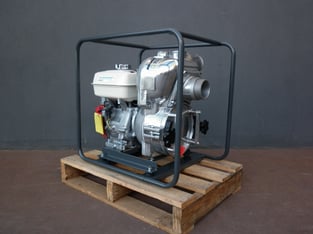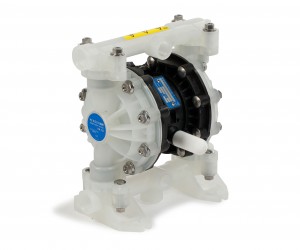Do you know the differences between wet prime and dry prime?
It’s important that you understand the pros and cons of both prime varieties as your selection will influence the efficiency of your operations. It is also important that you understand what your application requirements are.
Wet prime pumps

Wet prime pumps (commonly centrifugal pumps) have fewer components, generally a pump and motor or engine. As there are less parts, it means there are less failures and they are easier and cheaper to maintain. Preventative maintenance and the pumps application will determine the performance; however, they are known to be a well-lasting pump option. Generally, wet-prime pumps are best suited for applications with a relatively low-sump where there is an abundance of liquid and the pump is running constantly.
As wet-prime pumps require the pump cavity to be filled with liquid before its first use, it will continue to prime itself if the water stays above the eye of the impeller.
With every pump, there are downsides; clients must manually prime it after installation and possibly every time the pump is required to restart.
Pros
- easy to maintain;
- reliable option;
- cost-effective;
- does not require a dedicated power supply, portable.
Cons
- first-time use requires manual prime;
- if not installed correctly, every start may require manual re-priming;
- cannot control speed;
- application-specific - requires a relatively low sump and constant running time.
Dry prime pumps

Dry prime pumps (generally diaphragm pumps) do not require fluid for priming as they are maintained by a vacuum unit, diaphragm, compressor or other priming device. These pumps are suitable for all dewatering and transfer applications, due to their rapid priming and higher volume capacity.
As Dry-Prime pumps can handle large volumes of air in suction, they will be used in applications where there is intermittent flow or dry running.
Due to their design, dry-priming pumps will always outperform wet-priming pumps, as they incorporate non-clog impellers (more efficient than the open-impellers in wet-prime pumps).
Pros
- fast priming;
- efficient;
- increased capacity compared to wet-prime pumps;
- high lift capabilities;
- independent operation.
Cons
- expensive option;
- moving parts need to be maintained.
Before selecting a pump, make sure you go over the 5 things you need to know before selecting a pump. It is also critical that you understand the importance of you suction line and recommended installation best practices from the pump manufacturers.
To learn more about priming, and whether your pump needs prime, check out our last blog, Does my pump need to be primed?
Global Pumps are dedicated to finding the right solution for your pump application. Our team of experts have over 40 years’ experience and industry knowledge on best practice for any application. Chat to a Global Pumps team member today and solve your tough challenge.

